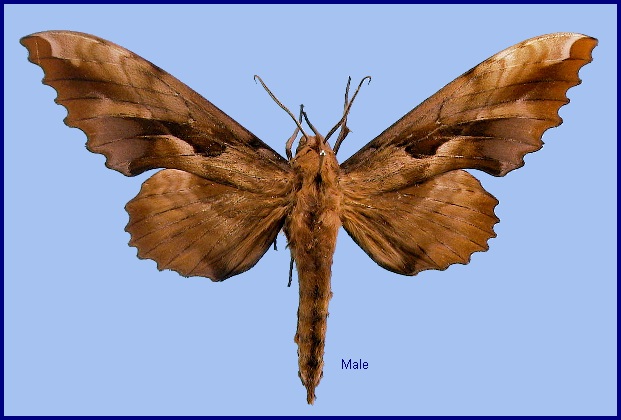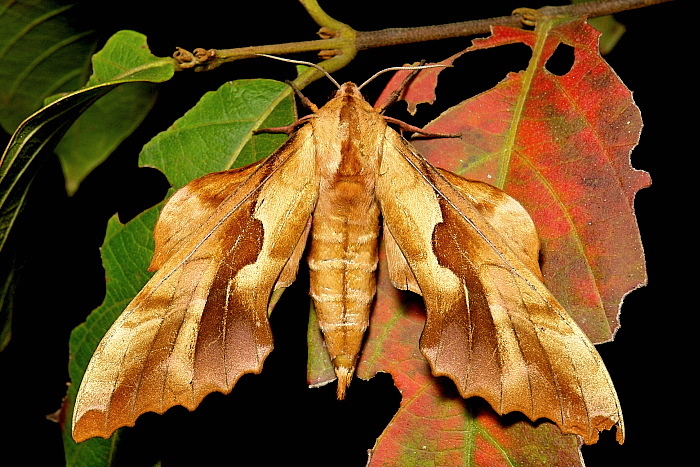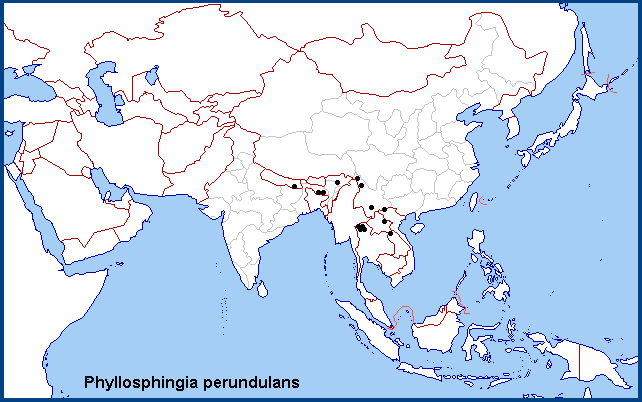
Phyllosphingia perundulans Swinhoe, 1897, Ann. Mag. nat. Hist. (6)19: 164. Type locality: [India, Meghalaya,] Jaintia Hills.
Note. Recent studies indicate that Phyllosphingia perundulans may be a distinct species and not a subspecies of Phyllosphingia dissimilis, but this still requires further investigation (see below). Additionally, the work of Zolotuhin and Ryabov (2012) indicates that the isolated Vietnamese population may represent a third distinct species of Phyllosphingia. However, with no molecular evidence available, the two authors have in the interim assigned a subspecific rank to the latter, namely Phyllosphingia dissimilis berdievi.
There is very little divergence in DNA barcodes (0.00–0.83%, average = 0.45%) between samples of Phyllosphingia dissimilis dissimilis from localities as distant as Honshu, Primorskiy Krai, Taiwan, Shaanxi, Sichuan and Xizang/Tibet. In contrast, a single sample of Phyllosphingia perundulans from Doi Inthanon, Thailand, is 3.78–4.37% divergent from the more northeastern samples. Although, this level of divergence is widely considered to be indicative of species-level taxonomic separation, it seems not to be unusual within species of Smerinthini. Indeed, maximum intraspecific divergences within species of this tribe can be even higher, e.g., Pseudoclanis postica (3.96%), Smerinthus szechuanus (5.15%), Laothoe populi (5.65%) and Smerinthus kindermannii (6.59%), where the higher-end divergences are associated only with subspecific differentiation at most. Consequently, in the absence of any consistent morphological differences, there may be no justification for treating Phyllosphingia perundulans as a good species.
Wingspan: 120mm.

China: iii (Yunnan); v (Xizang/Tibet); ix (Guizhou).
OVUM:
LARVA:
PUPA:
Larval hostplants. Unknown, but almost certainly Juglandaceae.
Unknown.
China: Yunnan (Bahand; Adunzi, nr Deqing/Dêqên (Deqing/Dêqên County, Diqing Tibetan Autonomous Prefecture/Dêqên Autonomous Prefecture); Simao/Pu'er; Gaoligong Shan; Dabaoshan, Huaping); Xizang/Tibet (Gamtog; Baxoi County); Guizhou (Jiangkou); Hunan (Guzhang; Shangzhi); Guangdong (Nanling National Forest Park (Morishita & Kishida, 2000)); ?Hainan (Sanya, Mt. Jianfengling).
The status of Phyllosphingia perundulans outside of Yunnan and Hunan is uncertain. The population in Guizhou is most probably Phyllosphingia perundulans but those recorded from Fujian (Longqi Shan), Guangdong and Guangxi could be either this species, Phyllosphingia dissimilis dissimilis or intermediate forms. Study of specimens from these provinces is necessary to resolve the problem.
Occurs from Nepal, east through northeastern India, Burma/Myanmar and northern Thailand, to southwestern China.

Holarctic; eastern Palaearctic region. Pleistocene refuge: Monocentric -- Yunnan refugium.
 Return to Sphingidae of the Eastern Palaearctic species list
Return to Sphingidae of the Eastern Palaearctic species list